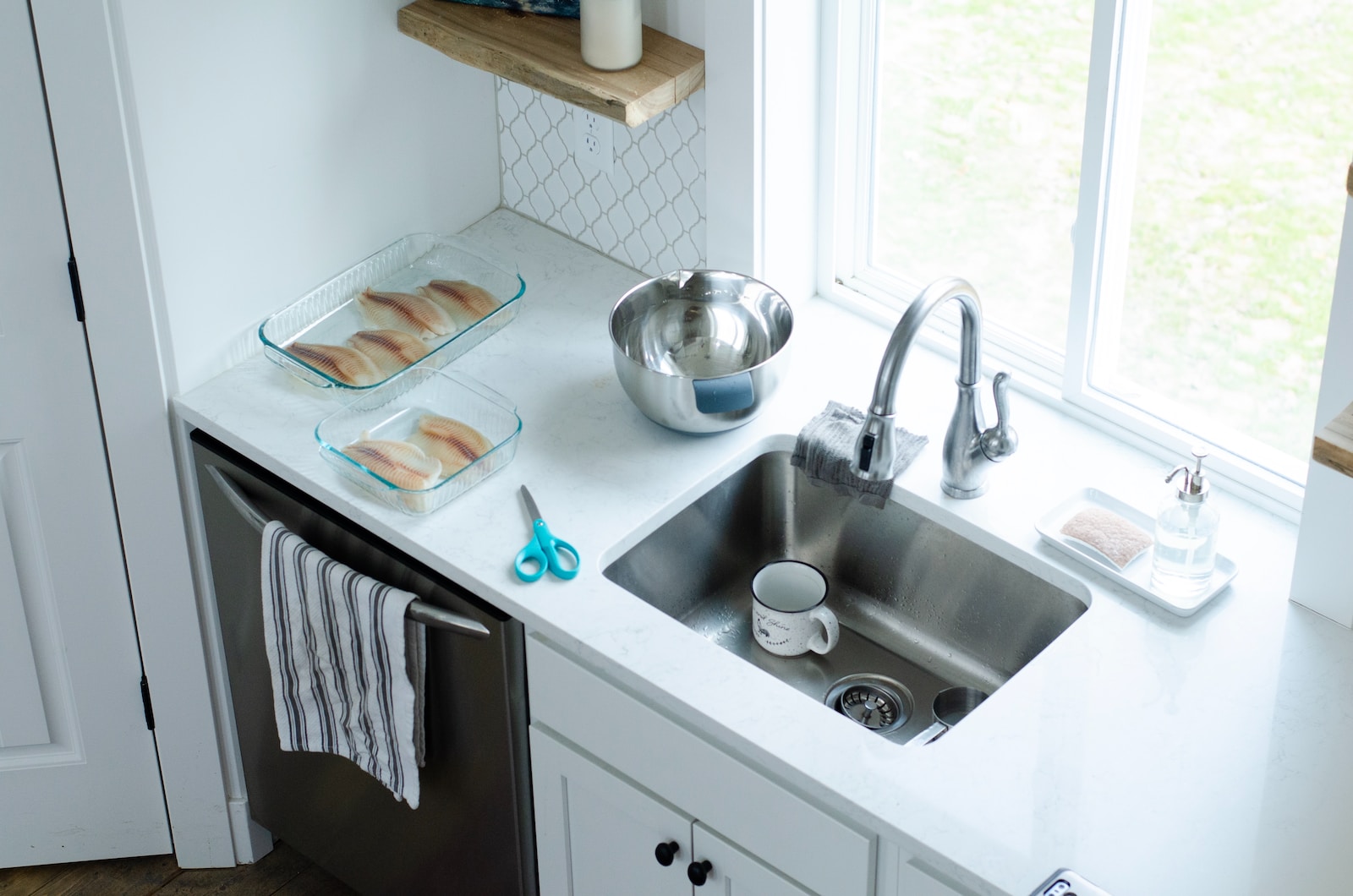When you have a clogged kitchen sink, it can be a major annoyance, the standing water and strange smells coming from the drain along with unsightly piles of debris around your faucet – it’s not something anyone wants to deal with for too long!
Fortunately, there are several effective DIY techniques you can use to unclog your kitchen sink quickly and efficiently. Read on
How to Unclog a Kitchen Sink
In most cases, it’s either a blockage in the drain trap below the sink or a clogged pipe just before it or just after it, let’s step through DIY tricks for clearing either of these blockages easily.
Clearing the Drain Trap
In many cases, a kitchen sink gets blocked by the accumulation of food debris and oil and grease/soap scum in the drain trap. The drain trap is a U-shaped bend or P-shaped pipe beneath your kitchen sink that serves the purpose of stopping smells from rising back up through the drain. Look under your sink and you’ll see a pipe shaped just like the picture below

In most cases, all that is required to clear out debris in the drain trap is boiling water or a vinegar solution which can help dissolve any soap scum or food particles stuck in the pipe juncture.
Method: Boil two quarts of hot tap water, pour directly into the drain opening, and let sit overnight. If this doesn’t work try white vinegar as an alternative ‐ mix equal parts warm and vinegar together and pour down slowly and again leave overnight.
Of course, you can also try a commercial enzymatic drain cleaner and in many cases, they are quite successful at clearing away any light debris and are especially useful for maintaining clear drains.
If that doesn’t unblock things, there may be a drain plug at the bottom of the U bend which you can undo and release debris, being careful to place a bowl underneath to catch the water and muck that will come flowing out.
If there is no drain point, it may be required to undo two clamps and remove the “U” shaped part, clear the blockage, and then refit. Before doing that, you may first want to try the methods listed next.
Clearing Clogged Pipes
For more stubborn blockages in the drain pipe, using specialized equipment may prove necessary.
First, try a plunger – Place the plunger firmly over the drain opening and plunge up and down forcefully until you break up the clog. You may try the hot water and vinegar solution first and after waiting then try the plunger. Repeat if necessary. If the plunger doesn’t work, proceed to use a snake.
Note: There are three types of plungers, one for sinks and drains and numerous others suitable for toilets as pictured below.
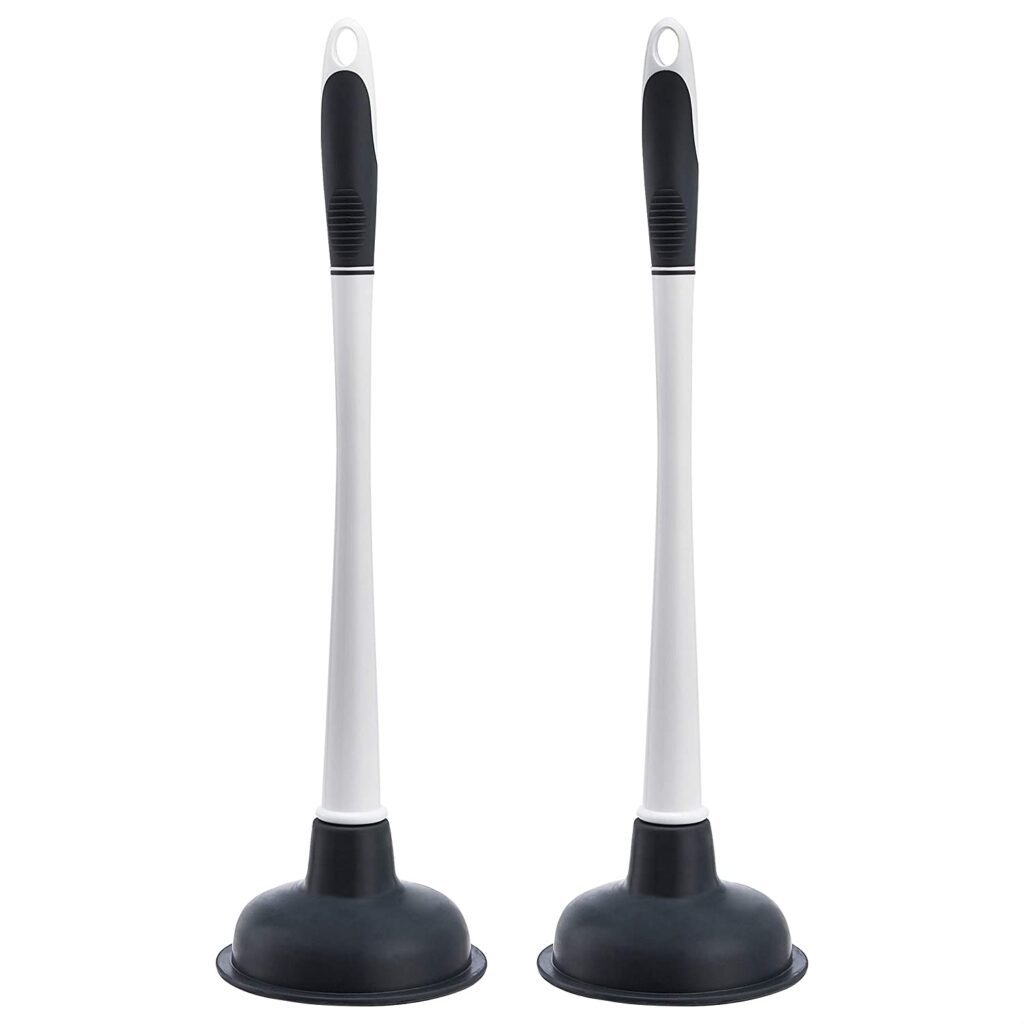
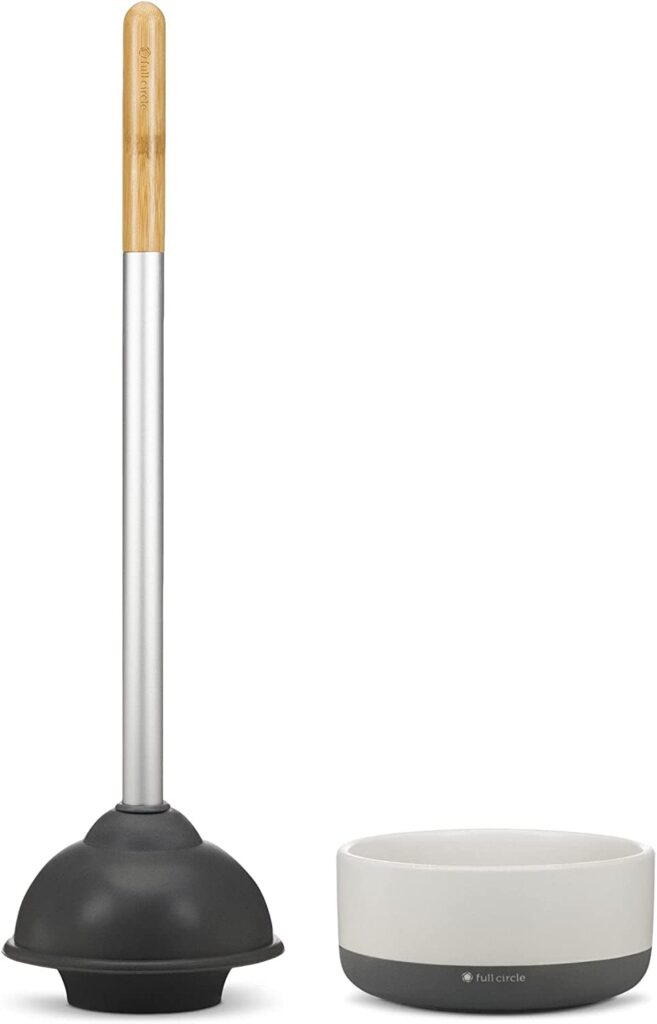

Drain Snakes – You can buy simple nylon plumbing snakes at hardware stores or even Amazon for under $10. Follow their instructions which will be something like pushing the snake down the drain, then twist and push until you feel resistance and turn the handle to grab the clog and then pull up to dislodge it. Repeat until the clog is completely cleared.
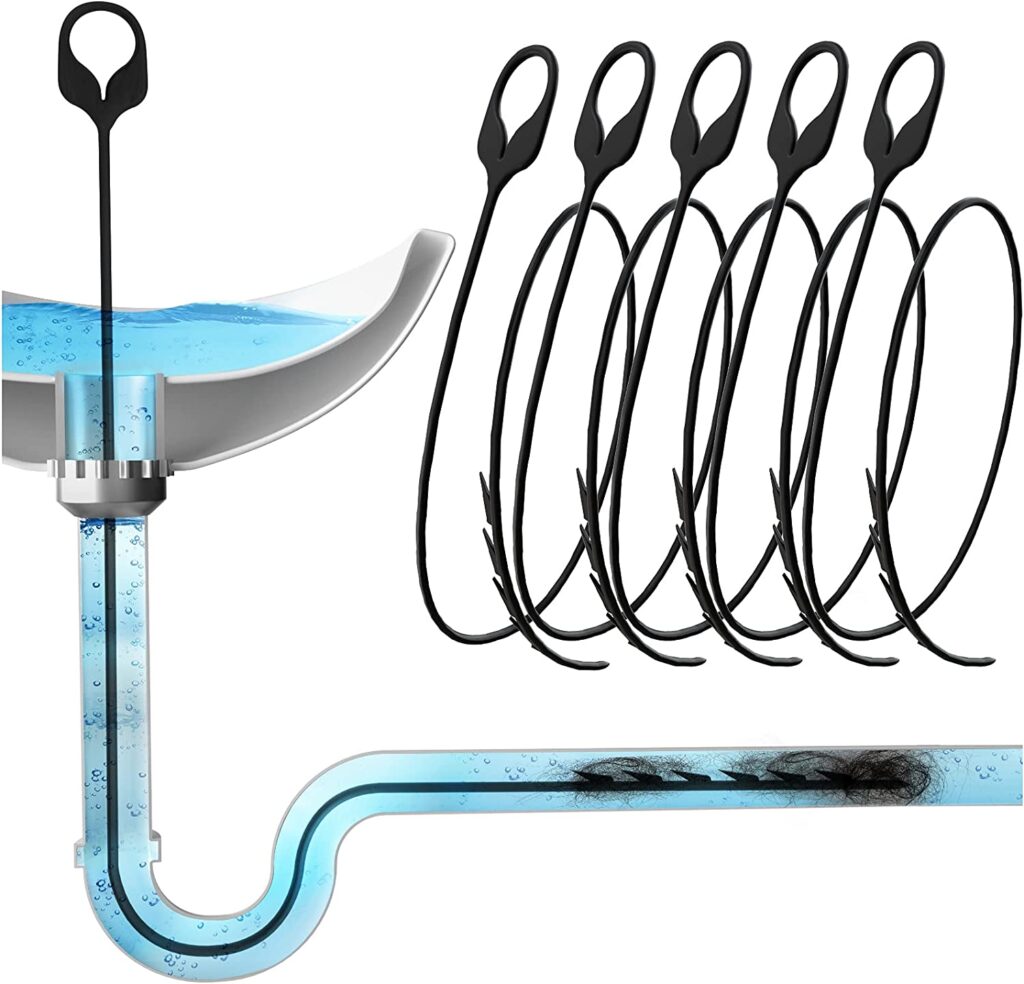
Power snakes – if the above steps have failed then it’s time for the power snake. It’s a more robust and powered “snake” and if you are unsure about handling this you may want to call in the pros at this point. The rotating power snake is fed down the drain until reaching the clog, breaking it up, and allowing for it to be slowly pulled out. Be very careful using power tools, as pipe damage can easily occur.
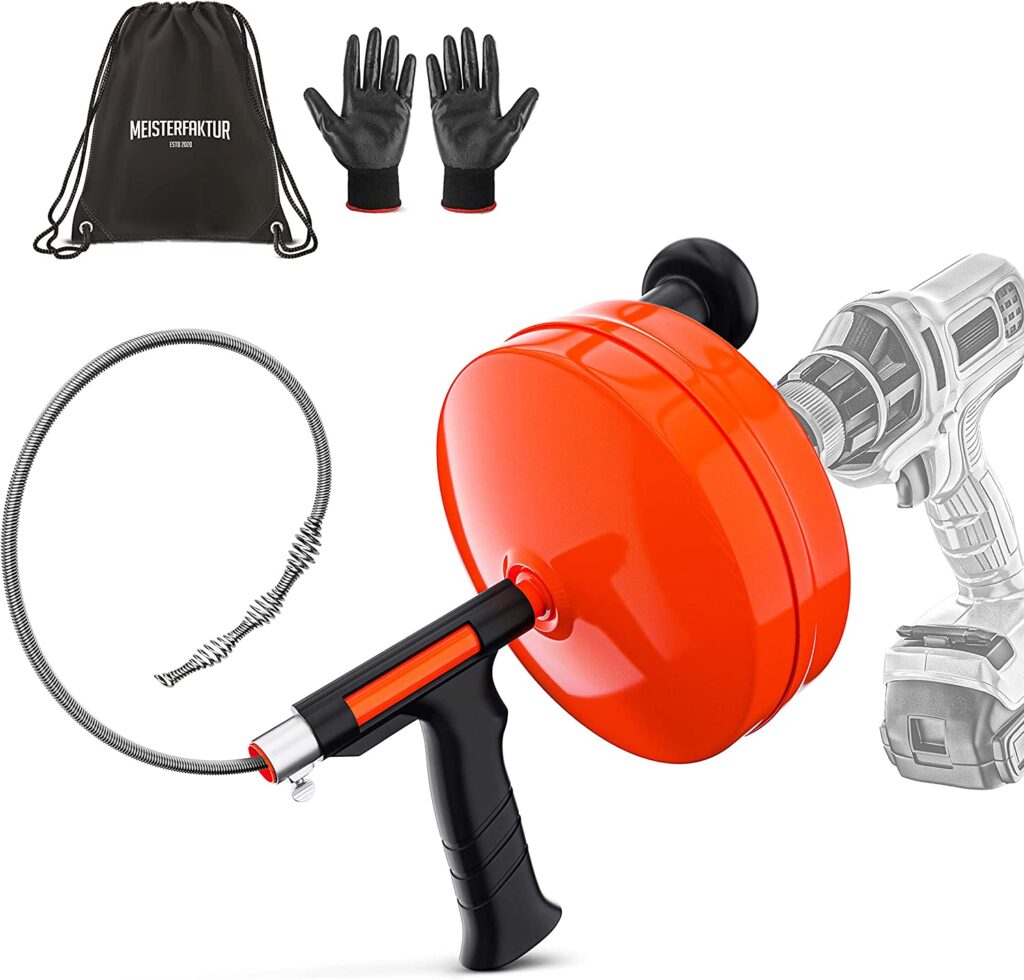
Last Step – once you believe the clog is fully dislodged, pour a commercial enzymatic drain cleaner down the drain to further break up any remaining debris and prevent future buildup. Follow product directions carefully.
Unclogging a Kitchen Disposal
If you have two sinks, use the above methods on the sink without the disposal unit, otherwise, if you have a single sink with a disposal, or the disposal itself is blocked, then try these steps
- TURN THE disposal off and unplug it from power!
- Grab a light and look inside the drain opening to see any foreign objects. You can try to remove or free it gently with a wooden spoon etc. Do not stick your hand in the drain opening!
- You can also try the plunger here too and see if it pops the blockage.
- You can also try the boiling water or a vinegar solution (can also add baking soda – 1/4 cup of baking soda followed by 1/2 cup of vinegar) and then leave it overnight. The next day, flush with hot water again and try running the disposal.
Using Commercial Drain Cleaner Chemicals
Many plumbers will note that chemical drain cleaners can damage the system over time as they use bleach and other corrosive ingredients to break up grease and soap scum. Regardless they are often very effective.
This type of cleaner is different from enzymatic drain cleaners which use bacteria to break down food debris and grease etc. The latter is kinder to the pipes and to the environment but usually only works for slow-moving drains or very light blockages.
If you do choose to use a chemical drain cleaner the top brands to go for are Drano Max Gel Liquid Clog Remover and Liquid-Plumr. Alternatively, if it’s just a slow-moving drain then an enzymatic drain cleaner like Green Gobbler Drain Clog Dissolver or Bio-Clean Bacteria Septic Cleaner will likely do just fine.
Preventing drains from clogging
Because prevention is always better than cure! Not just for the kitchen sink, here are some tips for maintaining clear drains around the entire home.
• Use drain screens or strainers to catch hair and soap scum. Place strainers over shower drains, sink drains, and tub drains to catch hair strands and soap scum before they go down the drain. Clean the strainers regularly and empty the debris.
• Don’t pour grease or oil down drains. Pour grease, oil, and fats into sealed containers and dispose of them in the garbage. They harden and clog drains.
• Run water while using a garbage disposal. Keep the water running for 30 seconds after you turn off the garbage disposal. The water helps flush down any debris left in the disposal.
• Compost Food Waste. Instead of flushing food waste like rice, pasta, or vegetable peels which can swell up with water and clog drains, try composting. There are many indoor composters on the market nowadays.
• Use a plunger. Use a plunger to try and dislodge any clogs before they get worse. If you notice water draining slower than normal that’s the time to act. Place the plunger firmly over the drain and plunge up and down forcefully until you break up the clog.
• Don’t flush wet wipes. While handy, wet wipes, baby wipes, and makeup wipes should be disposed of in the rubbish and as flushing them away can lead to clogged drains and even damaged drains. Even when they are marked as “flushable” they still take a long time to break down and can easily clog a drainage system when they converge with oil and grease.
• Have drains inspected regularly. Have a plumber professionally inspect and clear your drains once a year or every other year to remove any buildup and ensure proper flow and function. Catch problems early before major clogs develop.
• Don’t flush kitty litter. Never flush cat litter down toilets. The litter does not break down and will clog drains and damage pipes. Always dispose of kitty litter in the garbage.
• Limit toilet paper usage. Don’t flush too much toilet paper at once. Use only as much as needed to properly clean yourself and prevent clogs.

